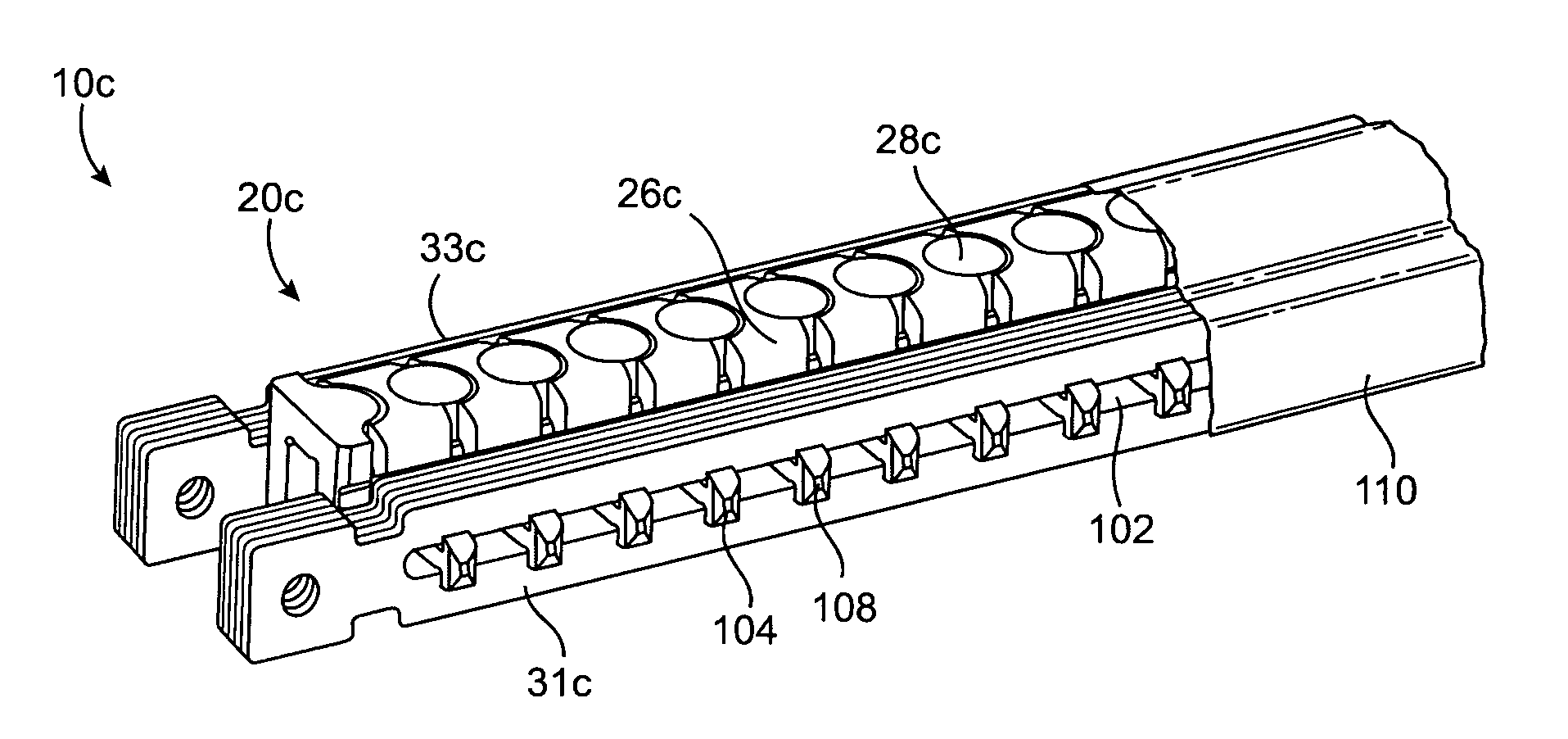Medical device with articulating shaft
a technology of articulating shafts and medical devices, which is applied in the field of surgical devices and methods, can solve the problems of increasing the complexity of surgical procedures, complex mechanisms that are expensive to manufacture and difficult to assemble, and bending the shaft in only one direction
- Summary
- Abstract
- Description
- Claims
- Application Information
AI Technical Summary
Benefits of technology
Problems solved by technology
Method used
Image
Examples
Embodiment Construction
[0045]A first preferred embodiment of a medical device is illustrated in FIGS. 1 and 2 and designated generally by the reference numeral 10. The medical device, or instrument, 10 is particularly configured for intricate surgical procedures where a direct, straight path to a desired destination is unavailable. In particular, endoscopic surgeries typically require circumnavigation around particular areas within the human body in order to reach a desired location for treatment.
[0046]The device 10 includes an articulating shaft, or bendable portion, 20 of particular interest to the invention. The articulating shaft 20 is formed as a distal portion of an overall shaft 22 that also includes a proximal rigid shaft portion 24. The overall shaft 22 defines a longitudinal axis 25. In the first preferred embodiment, the articulating shaft 20 comprises a plurality of independent pivot members 26 and pins 28 disposed in an alternating configuration. Thus, each pin 28 abuts an adjacent, but separ...
PUM
 Login to View More
Login to View More Abstract
Description
Claims
Application Information
 Login to View More
Login to View More - R&D
- Intellectual Property
- Life Sciences
- Materials
- Tech Scout
- Unparalleled Data Quality
- Higher Quality Content
- 60% Fewer Hallucinations
Browse by: Latest US Patents, China's latest patents, Technical Efficacy Thesaurus, Application Domain, Technology Topic, Popular Technical Reports.
© 2025 PatSnap. All rights reserved.Legal|Privacy policy|Modern Slavery Act Transparency Statement|Sitemap|About US| Contact US: help@patsnap.com



